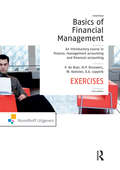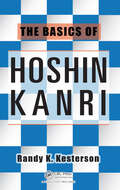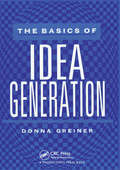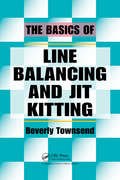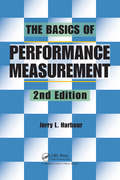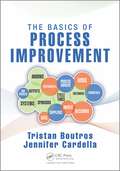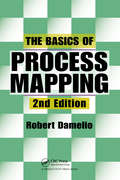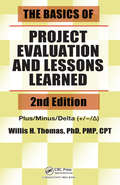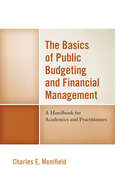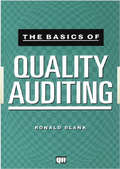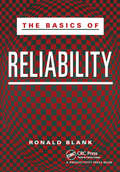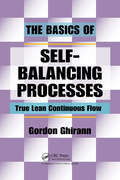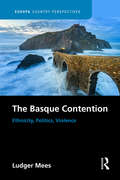- Table View
- List View
The Basics of Financial Management: An introductory course in finance, management accounting and financial accounting
by Peter de Boer Rien Brouwers Wim KoetzierThis basic book is to familiarize students in (international) English-language programmes with the basics in the fields of finance, finance management and accounting. No prior knowledge of business economics is required. This book is user-friendly, accessible, and yet comprehensive in its approach. It takes an in-depth, integrated look at the principles of management accounting, financial accounting and finance. Examples and case studies from newspapers and professional journals encourage the practical application of the material. Study questions reinforce and test the student's understanding of the key concepts. A glossary of key terms is included at the end of each chapter. The book also contains multiple choice questions and other assignments designed to stimulate thinking about the topics that are discussed. Further self-test materials are available at www.basicsfinancialmanagement.noordhoff.nl including interactive multiple choice questions, exercises, cases and teachers manual.
The Basics of Hoshin Kanri
by Randy K. KestersonThe problem with most Hoshin Kanri books is that they describe a complex methodology that is overwhelming to most leaders and their organizations. The need to essentially change the culture of the entire organization to make Hoshin work isn‘t practical for most companies when first starting out.The Basics of Hoshin Kanri uses an easy-to-follow stor
The Basics of Idea Generation
by Donna GreinerContinuous generation and implementation of ideas is critical to creating an environment that helps foster the development of improvement techniques. The Basics of Idea Generation provides a cost-effective method that can help inspire employees to consistently identify and implement new ideas, using a proven five-step process. The process starts by creating an opportunity statement. From there the method then has one collect raw materials, before holding an idea workout, and then evaluating the idea. Implementation is the final step. The author also explains the 20 tools that help complete each step, along with solutions to overcoming the barriers to creativity.
The Basics of Line Balancing and JIT Kitting
by Beverly TownsendAccessible to the Lean novice and shop floor employee, The Basics of Line Balancing and JIT Kitting explores line balancing and the pre-assembly of components into a finished product in a just-in-time fashion (JIT Kitting). It explains how to use time studies, develop yamazumi charts, discover and eliminate waste, balance your line, and create new
The Basics of Performance Measurement
by Jerry L. HarbourYou can‘t understand, manage, or improve what you don‘t measureWhile every smart executive now knows the truth of those words, perhaps more so than anyone, it was Jerry Harbour who turned that adage into a science. Originally published in 1997, The Basics of Performance Measurement helped pioneer the science of performance measurement and continues
The Basics of Process Improvement
by Tristan Boutros Jennifer CardellaUnlike other books that promote a specific process and performance improvement discipline, this book shows organizations how to achieve success by fixing basic operational issues and problems using a broad and wide-sweeping process-based toolkit. In addition, it helps individuals who have worked in stale- or siloed-thinking enterprises make the tra
The Basics of Process Mapping
by Robert DamelioThis book provides how-to guidance and examples for three types of maps, namely relationship map, cross-functional process map, and flowchart. It helps readers to effectively apply all three types of maps to make work visible at the organization, process, and job/performer levels.
The Basics of Project Evaluation and Lessons Learned
by Michael E. Thase Raymond W. Lam Willis H. Thomas David J. NuttFor some organizations, Lessons Learned (LL) is an informal process of discussing and recording project experiences during the closure phase. For others, LL is a formal process that occurs at the end of each phase of a project. Regardless of when they are performed, if you are a project team member, chances are you will soon be required to present an evaluation of your project using Lessons Learned.Presenting new information that updates the award-winning first edition, The Basics of Project Evaluation and Lessons Learned, Second Edition supplies practical guidance on conducting project Lessons Learned. The first edition won the Project Management Institute's (PMI®) David I. Cleland Project Management Literature Award. Following in the footsteps of its popular predecessor, this second edition provides an easy-to-follow, systematic approach to conducting Lessons Learned on a project. Updated to align with the PMBOK® Guide, Fifth Edition Includes three new chapters—PRINCE2®, Agile Retrospectives, and Knowledge Transfer— in response to information requests from readers of the first edition from around the world Enhanced with valuable new resources in the Project Evaluation Resource Kit (PERK) found on the downloadable resources, including a fully functional MS Access Lessons Learned Database The research in this book is based on four years of doctoral dissertation research and is supported by renowned experts in the field of evaluation. The concepts covered are applicable to all types of organizations that implement projects and need to conduct Lessons Learned.Providing tools and techniques for active engagement, the text is founded on the principles of conducting project evaluations as recommended by the Project Management Institute (PMI), the world’s leading not-for-profit membership association for the project management profession, and PRINCE2® (Project in Controlled Environments version 2), a major governing body of project management.Simplifying and formalizing the methodology of conducting LL in projects, the contents of this book will help organizations, large and small, more effectively implement processes and systems to support effective LL. The text is supported by a Project Evaluation Resource Kit (PERK), which is found in the downloadable resources.
The Basics of Public Budgeting and Financial Management: A Handbook for Academics and Practitioners
by Charles E. MenifieldIn The Basics of Public Budgeting and Financial Management: A Handbook for Academics and Practitioners, 4th Edition, Charles E. Menifield carefully examines the key areas that every budgeting and financial management student needs to know in order to be a successful budgeteer in a local government, nonprofit, or state-level budget office. His analysis includes a discussion of: basic budgeting concepts; accounting techniques; a discussion of the budget process; budget techniques and analytical models; capital and personnel budgets; financial management; and budget presentations. Homework assignments reinforce the various subjects with practical applications that allow the students to reflect and engage the material in a realistic manner. This book blends budgetary theory and practice in a volume that is easy to understand by both undergraduate and graduate students alike.
The Basics of Quality Auditing
by Ronald BlankAs the latest addition to "The Basics" Series, The Basics of Quality Auditing provides an inexpensive and easy-to-follow WHO, WHAT, WHERE, WHEN, WHY and HOW format that is perfect for training. It discusses the four main questions all audits should answer: Is there a procedure? Is the procedure being followed? Does the procedure meet the needs of t
The Basics of Reliability
by Ronald BlankThis book is a handy source for comprehending reliability concepts, interpreting reliability requirements, and understanding reliability reports. It is intended for senior management, inspectors, technical sales personnel, product engineers, manufacturing engineers, and quality engineers.
The Basics of Self-Balancing Processes: True Lean Continuous Flow
by Gordon GhirannSelf-Balancing is not just a tweak or change to assembly line balancing, but a completely transformed method for achieving continuous flow. Among the reasons you should try Self-Balancing is that you can expect a productivity improvement of at least 30 percent with improvements of 50-60 percent quite common.Using a well-tested method for successful improvements initiated by the author, The Basics of Self-Balancing Processes: True Lean Continuous Flow is the first book to explain how to achieve continuous flow in both simple and complex manufacturing environments. It describes how to recognize and resolve weak links to ensure continuous flow in your manufacturing operations.The book offers rules, tools, and guidelines to help you not only solve problems at the root, but even eliminate them before they start. It reviews the shortcomings of traditional assembly line balancing and walks readers through the new paradigm of Self-Balancing.The text includes a comprehensive overview that demonstrates the power, flexibility, and breakthroughs possible with this method. Offering solutions to the shortcomings associated with standard line balancing including inventory buffers, variation, and operator pace it provides you with the tools and understanding required to deal with batch and off-line processes, debug your line, arrange your parts and tools, and design your own Self-Balanced cells.Watch Gordon Ghirann discuss how his book can increase the productivity of your business. http://www.youtube.com/watch?v=yte0622XbcI&feature=youtu.be
The Basque Contention: Ethnicity, Politics, Violence (Europa Country Perspectives)
by Ludger MeesTo the outside world, for some half a century, the words ‘Basque Country’ have provoked an almost instant association with the Euskadi Ta Askatasuna (ETA, Basque Homeland and Liberty) separatist group and violent conflict. The Basque Contention: Ethnicity, Politics, Violence attempts to undo this simplistic correlation and, for the first time, provide a definitive history of the wider political issues at the heart of the Basque Country. Drawing on three decades of research on Basque nationalism, Ludger Mees weaves together the various historical and contemporary strands of this contention: from the late medieval kingdoms of Spain and France and the first articulations of a Basque ethno-particularism, to the dissolution of ETA in 2018, and all manner of dictatorships, conflict, peace, civil war, political intrigue, hope and failure in-between. For anyone who has ever wanted to gain an insight into the Basque Country beyond the headlines of ETA and grasp the complexity of its relationship with Spain, France and indeed itself, this volume provides a detailed, yet digestible, basis for such an understanding.
The Basque Country: Strategy for Economic Development
by Michael E. Porter Christian H.M. Ketels Jesus M ValdalisoThe Basque country, with a population of 2.1 million and covering 7,233 square kilometers, is an autonomous region located in the north of Spain, physically separated from it by the Pyrenees mountains. Presents the history of the region--highly prosperous at the turn of the 20th century, but nearing bankruptcy by the 1950s. By 2001, the Basque GDP per capita had risen to a level well ahead of Spain and most European countries. At the same time that the region was enjoying the spoils of admirably executed cluster initiatives, it was being threatened by the destabilizing violence of the Basque separatist extreme, a slowing global economy, and an always-precarious balance of power between the Basque's own government and the government of Spain.
The Bass Handbook of Leadership: Theory, Research, and Managerial Applications
by Bernard M. Bass Ruth BassFor thirty-three years and through three editions, Bass & Stogdill's Handbook of Leadership has been the indispensable bible for every serious student of leadership. Since the third edition came out in 1990, the field of leadership has expanded by an order of magnitude. This completely revised and updated fourth edition reflects the growth and changes in the study of leadership over the past seventeen years, with new chapters on transformational leadership, ethics, presidential leadership, and executive leadership. Throughout the Handbook, the contributions from cognitive social psychology and the social, political, communications, and administrative sciences have been expanded. As in the third edition, Bernard Bass begins with a consideration of the definitions and concepts used, and a brief review of some of the betterknown theories. Professor Bass then focuses on the personal traits, tendencies, attributes, and values of leaders and the knowledge, intellectual competence, and technical skills required for leadership. Next he looks at leaders' socioemotional talents and interpersonal competencies, and the differences in these characteristics in leaders who are imbued with ideologies, especially authoritarianism, Machiavellianism, and self-aggrandizement. A fuller examination of the values, needs, and satisfactions of leaders follows, and singled out for special attention are competitiveness and the preferences for taking risks. In his chapters on personal characteristics, Bass examines the esteem that others generally accord to leaders as a consequence of the leaders' personalities. The many theoretical and research developments about charisma over the past thirty years are crucial and are explored here in depth. Bass has continued to develop his theory of transformational leadership -- the paradigm of the last twenty years -- and he details how it makes possible the inclusion of a much wider range of phenomena than when theory and modeling are limited to reinforcement strategies. He also details the new incarnations of transformational leadership since the last edition. Bass has greatly expanded his consideration of women and racial minorities, both of whom are increasingly taking on leadership roles. A glossary is included to assist specialists in a particular academic discipline who may be unfamiliar with terms used in other fields. Business professors and students, executives in every industry, and politicians at all levels have relied for years on the time-honored guidance and insight afforded by the Handbook.
The Battle
by Arthur C. BrooksAmerica faces a new culture war. It is not a war about guns, abortions, or gays-rather it is a war against the creeping changes to our entrepreneurial culture, the true bedrock of who we are as a people. The new culture war is a battle between free enterprise and social democracy. Many Americans have forgotten the evils of socialism and the predations of the American Great Society’s welfare state programs. But, as American Enterprise Institute’s president Arthur C. Brooks reveals in The Battle, the forces for social democracy have returned with a vengeance, expanding the power of the state to a breathtaking degree. The Battle offers a plan of action for the defense of free enterprise; it is at once a call to arms and a crucial redefinition of the political and moral gulf that divides Right and Left in America today. The battle is on, and nothing less than the soul of America is at stake.
The Battle Against the Luddites: Unrest in the Industrial Revolution During the Napoleonic Wars
by Paul L. DawsonAs the columns of French infantry marched up the slopes of the Mont St Jean at Waterloo, the British heavy cavalry, the Royal Scots Greys to the fore, crashed into the packed ranks of the enemy. This was not the first time the Greys had drawn their swords during the Napoleonic Wars – but it was their first against Napoleon’s troops. Three years earlier they had attacked workers in Halifax protesting at the introduction of machinery in the wool trade. Taking their name from Ned Ludd, who had smashed up knitting frames in Nottingham, the Luddites saw the emergence of mechanization as a threat to their livelihood, with machines replacing men. In response they took matters into their own hands by wrecking the new equipment. Industrial unrest had gathered pace throughout the 18th century and exploded in an unpresented wave of violence in 1799. Outbreaks of machine-breaking developed rapidly into strikes in a battle of capital against labor. A court battle ensued, culminating in new legislation in 1806 that backed the capitalists. This act, coupled with the impact of the Continental system introduced by Napoleon, which closed European and American ports to British merchants, heralded the largest economic depression of the era. Famine, pestilence and rising employment all fueled the fires of Luddism. Months of violence swept across the West Midlands, Lancashire and Yorkshire which saw one factory boss murdered; other factory owners began shooting protesting workers. The disturbances resulted in the mobilizing of thousands of regular soldiers – at one time there were as many British soldiers fighting the Luddites than there were fighting Napoleon on the Iberian Peninsula. As well as exploring these events, Paul L. Dawson also uncovers the origins of Luddism and their allies in the middle classes. The Napoleonic Wars marked the end of centuries old way of life in agriculture, textile production and the wider economy. The dramatic changes in Britain between 1790 and 1815 created a unique set of social grievances by those left behind by the unprecedented changes that were surging through the Britain which exploded into bitter fighting across large swathes of the country. With present day concerns over computerization replacing labor, this is a story that echoes down the centuries.
The Battle Of Versailles: The Night American Fashion Stumbled Into The Spotlight And Made History
by Robin GivhanOn November 28, 1973, the world's social elite gathered at the Palace of Versailles for an international fashion show. By the time the curtain came down on the evening's spectacle, history had been made and the industry had been forever transformed. This is that story.<P><P> Conceived as a fund-raiser for the restoration of King Louis XIV's palace, in the late fall of 1973, five top American designers faced off against five top French designers in an over-the-top runway extravaganza. An audience filled with celebrities and international jet-setters, including Princess Grace of Monaco, the Duchess of Windsor, Paloma Picasso, and Andy Warhol, were treated to an opulent performance featuring Liza Minnelli, Josephine Baker, and Rudolph Nureyev. What they saw would forever alter the history of fashion.<P> The Americans at the Battle of Versailles– Oscar de la Renta, Bill Blass, Anne Klein, Halston, and Stephen Burrows – showed their work against the five French designers considered the best in the world – Yves Saint Laurent, Hubert de Givenchy, Pierre Cardin, Emanuel Ungaro, and Marc Bohan of Christian Dior. Plagued by in-fighting, outsized egos, shoestring budgets, and innumerable technical difficulties, the American contingent had little chance of meeting the European's exquisite and refined standards. But against all odds, the American energy and the domination by the fearless models (ten of whom, in a groundbreaking move, were African American) sent the audience reeling. By the end of the evening, the Americans had officially taken their place on the world's stage, prompting a major shift in the way race, gender, sexuality, and economics would be treated in fashion for decades to come. As the curtain came down on The Battle of Versailles, American fashion was born; no longer would the world look to Europe to determine the stylistic trends of the day, from here forward, American sensibility and taste would command the world's attention.<P> Pulitzer-Prize winning fashion journalist Robin Givhan offers a lively and meticulously well-researched account of this unique event. The Battle of Versailles is a sharp, engaging cultural history; this intimate examination of a single moment shows us how the world of fashion as we know it came to be.
The Battle for Britain's Gold Standard in 1931 (Routledge Library Editions: The Gold Standard #4)
by Diane B KunzThis book, originally published in 1987 sets the British political and financial crisis of 1931 in an international context by concentrating on the bankers who were primarily responsible for leading the fight to protect sterling in a world context. 1931 marks the point at which the near-autonomy which bankers had achieved during the 1920s began to decline and 1931 was thus the last attempt of important groups to return Britain to the Edwardian era. The reasons for their failure to do this are still pertinent in today's international financial climate and this study provides a definitive account of an eciting episode in British politics.
The Battle for Hearts and Minds: Using Soft Power to Undermine Terrorist Networks
by Alexander T. J. LennonAlthough military operations have dominated media coverage of the war on terrorism, a much broader array of policy options may hold the key to reducing the appeal of global terrorist networks, particularly in economically destitute areas. These strategies involve the use of "soft power," a term first used by political scientist Joseph Nye in a 1990 article in Foreign Policy to describe nonmilitary strategies to shape international relations and behavior. The Battle for Hearts and Minds discusses four aspects of soft power. The first section of the book considers failed or failing states as havens for transnational terrorist networks, and examines the most effective ways to build stable nations in unstable regions, including focused looks at Afghanistan and Sierra Leone. The second section explores post conflict reconstruction, including in-depth examinations of security, justice and reconciliation, opportunities for achieving socioeconomic well-being, and increased participation in government. The third section examines public diplomacy, asking whether the United States needs new policies or simply a new image to increase its appeal in the Arab and Muslim world. The final section of the book looks at foreign assistance, and assesses the potential of the current administration's "Millennium Challenge Account" (or as one contributor puts it, "Compassionate Conservatism Meets Global Poverty") to combat poverty, increase democracy, and reduce the appeal of terror. The Battle for Hearts and Minds presents a balanced assessment of the role that nonmilitary options can play against transnational terrorist networks.
The Battle for Human Nature: Science, Morality and Modern Life
by Barry Schwartz"Provocative and richly textured. . . .Schwartz's analyses of the inadequacies of contemporary scientific views of human nature are compelling, but the consequences are even more worthy of note." --Los Angeles Times Out of the investigations and speculations of contemporary science, a challenging view of human behavior and society has emerged and gained strength. It is a view that equates "human nature" utterly and unalterably with the pursuit of self-interest. Influenced by this view, people increasingly appeal to natural imperatives, instead of moral ones, to explain and justify their actions and those of others.
The Battle for Investment Survival
by G. M. LoebA reader of one of my earlier discussions asked-"Have you ever tried out the ideas outlined in your book?" My reply was to the effect that the ideas were tried out first, and the book written afterward. Any earner who earns more than he can spend is automatically an investor. It doesn't matter in the slightest whether he wants to be or not, or even whether he realizes that he is investing. Storing present purchasing power for use in the future is investing, no matter in what form it's put away. Some popular and common forms include money itself, government bonds, savings bank deposits, real estate, commodities, securities of all types, diamonds and where and when it's legal, gold.
The Battle for Paradise: Puerto Rico Takes on the Disaster Capitalists
by Naomi KleinFearless necessary reporting . . . Klein exposes the &‘battle of utopias&’ that is currently unfolding in storm-ravaged Puerto Rico&” (Junot Díaz, author of The Brief Wondrous Life of Oscar Wao) &“We are in a fight for our lives. Hurricanes Irma and María unmasked the colonialism we face in Puerto Rico, and the inequality it fosters, creating a fierce humanitarian crisis. Now we must find a path forward to equality and sustainability, a path driven by communities, not investors. And this book explains, with careful and unbiased reporting, only the efforts of our community activists can answer the paramount question: What type of society do we want to become and who is Puerto Rico for?&” —Carmen Yulín Cruz, Mayor of San Juan, Puerto Rico In the rubble of Hurricane Maria, Puerto Ricans and ultrarich &“Puertopians&” are locked in a pitched struggle over how to remake the island. In this vital and startling investigation, bestselling author and activist Naomi Klein uncovers how the forces of shock politics and disaster capitalism seek to undermine the nation&’s radical, resilient vision for a &“just recovery.&” All royalties from the sale of this book in English and Spanish go directly to JunteGente, a gathering of Puerto Rican organizations resisting disaster capitalism and advancing a fair and healthy recovery for their island. &“Klein chronicles the extraordinary grassroots resistance by the Puerto Rican people against neoliberal privatization and Wall Street greed in the aftermath of the island&’s financial meltdown, of hurricane devastation, and of Washington&’s imposition of an outside control board over the most important U.S. colony.&” —Juan González, cohost of Democracy Now! and author of Harvest of Empire: A History of Latinos in America
The Battle for Social Security: From FDR's Vision To Bush's Gamble
by Nancy J. AltmanThis book illuminates the politics and policy of the current struggle over Social Security in light of the program's compelling history and ingenious structure. After a brief introduction describing the dramatic response of the Social Security Administration to the 9/11 terrorist attack, the book recounts Social Securityâ??s lively history. Although President Bush has tried to convince Americans that Social Security is designed for the last century and unworkable for an aging population, readers will see that the President's assault is just another battle in a longstanding ideological war. Prescott Bush, the current Presidentâ??s grandfather, remarked of FDR, "The only man I truly hated lies buried in Hyde Park." The book traces the continuous thread leading from Prescott Bush and his contemporaries to George W. Bush and others who want to undo Social Security. The book concludes with policy recommendations which eliminate Social Security's deficit in a manner consistent with the program's philosophy and structure.
